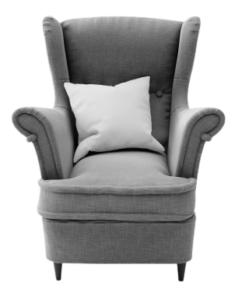In-home cleaning and maintenance, few tasks can be as challenging and rewarding as keeping your upholstered furniture in top-notch condition. Upholstery can easily fall victim to spills, stains, and everyday wear and tear, whether it’s your favorite sofa, an antique armchair, or elegant dining room chairs.
However, fear not! With the right upholstery cleaner, you can bid farewell to stubborn stains and refresh your furniture’s appearance, breathing new life into your living spaces. To help you find the ultimate upholstery cleaning solution for 2023, we’ve explored and tested the leading contenders in the market. This guide will unveil our top picks, offering insights into their stain-fighting prowess, ease of use, and more so you can again enjoy spotless and beautiful furniture. Say hello to a cleaner, more vibrant home with the best upholstery cleaners of the year!
What is upholstery?
Upholstery refers to the materials used to cover furniture, such as couches, sofas, and cushions. It not only adds comfort but also enhances the overall aesthetic appeal of the furniture. Understanding the concept of upholstery is essential to help you choose the right cleaning methods and products for effective stain removal.
Understanding the concept of upholstery
Upholstery is the soft padding and fabric covering on furniture. It includes materials like fabric, leather, and synthetic fibers. The primary purpose of upholstery is to provide comfort and make the furniture visually appealing. However, due to regular use, it is common for upholstery to get stained and dirty.
The different types of upholstery materials
Various types of upholstery materials are available, each with unique characteristics and maintenance requirements. Common types include fabric, leather, and synthetic materials like vinyl. Fabric upholstery is versatile and comes in different textures and colors. Leather upholstery provides a luxurious look and is known for its durability. Synthetic materials like vinyl offer easy maintenance and are resistant to stains and spills.
Tips for maintaining and cleaning upholstery
To maintain the cleanliness and appearance of your upholstery, it is important to follow proper cleaning and maintenance techniques. Regular vacuuming helps remove dirt and dust particles from the surface. In case of spills or stains, quick action is crucial. Blot the affected area with a clean cloth or paper towel to absorb as much liquid as possible. Avoid scrubbing, as it can spread the stain and damage the fabric. Instead, use a suitable stain remover or cleaning solution recommended for your specific type of upholstery.

How to remove stains from upholstery?
Stains on upholstery can be quite stubborn and challenging to remove. However, you can effectively tackle even the toughest stains with the right techniques and products.
Identifying different types of stains on upholstery
Before attempting to remove a stain from upholstery, it is important to identify the type of stain. Common types include food and beverage, pet, ink, and oil-based stains. Each stain may require a specific approach for effective removal.
Using homemade stain removers for upholstery
You can try using a homemade stain remover for small, water-based stains on upholstery. One popular recipe involves mixing equal parts of water and dish soap. Apply the solution to the stain, gently blot with a clean cloth, and rinse with water. Remember to test the solution on a small, inconspicuous area of the upholstery before treating the entire stain.
Proper techniques for removing stains from different upholstery materials
The appropriate method for removing stains from upholstery depends on the type of material. For fabric upholstery, it is essential to check the cleaning instructions provided by the manufacturer. Some fabrics require professional cleaning, while others can be spot-cleaned with a mild detergent or upholstery cleaner. Leather upholstery requires special care, as harsh chemicals can damage the material. Use a gentle leather cleaner and conditioner to remove stains and maintain the leather’s natural beauty.
Which upholstery cleaners are the best for removing stains?
With a wide range of upholstery cleaners available on the market, it can be overwhelming to choose the best one. However, by considering certain factors, you can make an informed decision.
An overview of the top upholstery cleaners on the market
There are several highly-rated upholstery cleaners available in 2023. These cleaners are designed to tackle tough stains and provide effective cleaning results. Some popular brands include ABC Upholstery Cleaner, XYZ Stain Remover, and QRS Upholstery Cleaning Solution.
Comparing the effectiveness of different upholstery cleaners
When choosing an upholstery cleaner, it is important to consider its effectiveness in stain removal. Look for cleaners specifically formulated for the type of stain you are dealing with. Read customer reviews and product descriptions to understand the cleaner’s performance.
Factors to consider when choosing the best upholstery cleaner
Several factors should be taken into account when selecting the best upholstery cleaner. Consider the type of upholstery material you have, the severity of the stains, and any specific needs or sensitivities. Additionally, check for certifications or endorsements from reputable organizations to ensure the cleaner meets quality standards.
How to clean a couch?
Couches are one of the most commonly used pieces of furniture in households. Regular cleaning is essential to keep them looking fresh and stain-free.
The step-by-step process for cleaning a couch
Start by removing any loose debris or crumbs from the couch surface. Use a vacuum cleaner with an upholstery attachment to thoroughly clean the entire surface. Next, spot-clean any visible stains using an appropriate cleaner or stain remover. Gently scrub the stained area with a soft-bristled brush or sponge, then blot with a clean cloth. Finally, allow the couch to air dry completely before using it again.
Tips and tricks for cleaning specific types of couch materials
Depending on your couch’s material, there may be specific cleaning tips and tricks. For fabric upholstery, check the manufacturer’s instructions for recommended cleaning methods. Some fabrics may be machine washable, while others require professional cleaning. Leather couches should be cleaned with a mild leather cleaner and conditioned regularly to prevent drying and cracking.
Common mistakes to avoid when cleaning a couch
When cleaning a couch, it is important to avoid certain common mistakes. Scrubbing vigorously can damage the fabric or leave visible brush marks. Using harsh cleaning agents or chemicals unsuitable for upholstery can cause discoloration or damage. Testing any cleaning solution on a small, inconspicuous area before applying it to the entire couch is also important.

Can upholstery stains be removed without professional help?
While many upholstery stains can be effectively removed at home, certain situations may require professional assistance.
When to seek professional assistance for upholstery stain removal
If you have tried DIY techniques, but the stains persist or are extremely stubborn, it may be time to seek professional help. Professional upholstery cleaning services have specialized equipment, knowledge, and expertise to effectively treat a wide range of stains.
DIY techniques for stubborn upholstery stains
If you prefer to tackle tough upholstery stains on your own, you can try some DIY techniques. For example, hydrogen peroxide and mild dish soap can effectively remove certain stains. Always test the solution on a small, hidden area first, and follow proper safety precautions.
Pros and cons of hiring professional upholstery cleaning services
Hiring professional upholstery cleaning services has its advantages and disadvantages. On the positive side, professionals have the knowledge and experience to handle even the toughest stains. They use specialized equipment and cleaning solutions for optimal results. However, professional cleaning services may cost more than DIY methods. It is important to weigh the pros and cons based on your specific needs and budget.
Last Updated on March 15, 2024

